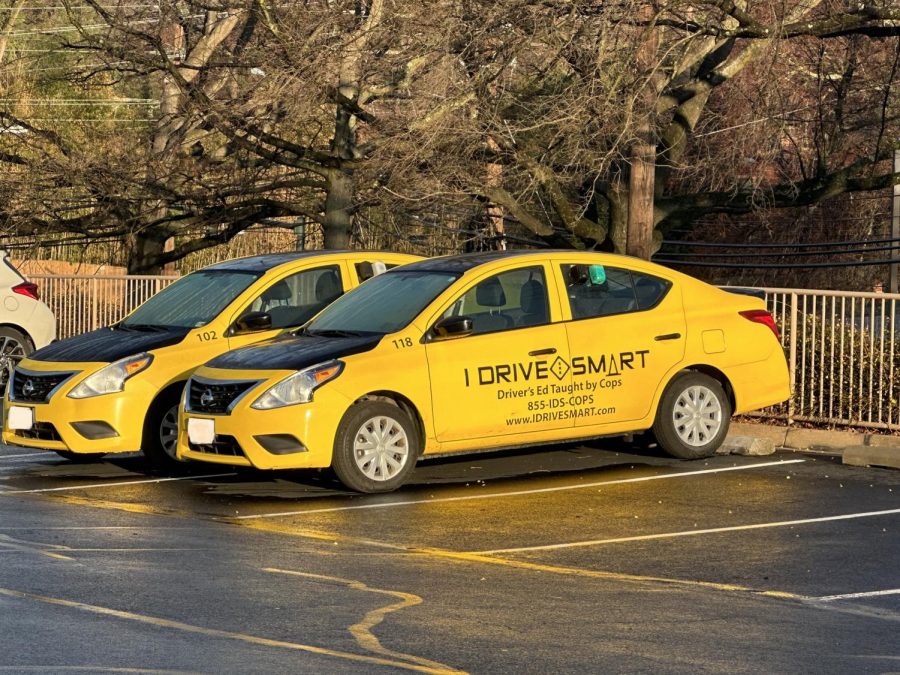Observer Opinion: Driver’s Ed must be accessible
In order to obtain their license, students drivers are required to complete six hours of in-car driving instruction using driving school-provided cars.
March 24, 2023
Beep beep! Getting a driver’s license is arguably one of the most defining moments in a high schooler’s life. Although it may seem like just a plastic card to some, a driver’s license gives students a sense of independence and is the first step into the world of adulthood. While this experience is new and exciting, driving with caution and knowing the rules of the road are vital to preventing accidents and creating a safe environment for other drivers and pedestrians.
In order for minors to obtain a provisional license, applicants are required to participate in and successfully complete a driver’s education program. According to Maryland’s Motor Vehicle Administration, this includes completing 30 hours of classroom learning and six hours of behind-the-wheel instruction that guides students through driving basics, road rules and safe driving information.
Up until the 1990s, MCPS offered driver’s education with health as its semester counterpart. While MCPS stopped the program, neighboring counties like Fairfax County and Loudoun County continue to offer it. Information taught from the driver’s education curriculum is proven to be beneficial for drivers and the environment around them. According to the AAA Foundation, a non-profit organization dedicated to traffic safety research and education, driver’s education is associated with a lower incidence of crashes and convictions, reducing crashes by 4.3% and convictions by 40%. To ensure that all students have the opportunity to drive and are being taught effectively, driver’s education should be re-integrated into the MCPS curriculum as a required course.
Driver’s education is currently offered by many private driving schools in Maryland like Greg’s Driving School and iDrive Smart. With so many different companies, it is hard to measure how well the curriculum is taught. Since the content in driver’s education is crucial to students’ safety on the road, there needs to be assurance that the information is being taught effectively and correctly. Integrating driver’s education into schools would guarantee that a universal curriculum is taught across the county.
In addition, the cost for private driving instruction ranges from $300-650 depending on whether one is purchasing classroom instruction, behind-the-wheel training or both. This can be extremely expensive for lower income families, which would hinder some students’ abilities to get a license. Incorporating driver’s education in school would eliminate the cost, so students from all income level families would be eligible to obtain their license without the financial burden.
Private driving schools can not only be expensive, but also inconvenient for already busy students. Classroom instruction involves ten consecutive days of learning with each class session running three hours long. In addition to a seven-hour school day, extracurricular activities and piles of school work, these sessions can be extremely tiring and time consuming which can impact students’ stress levels. Including driver’s education as a class would stretch out three hour sessions into around 45 minute class periods during the school day, making the course more manageable and less overwhelming for students.
Driver’s education offered online by private companies has become a more popular option for students since the COVID-19 pandemic hit. However, the convenience of distance learning may not be effective. WCHS students who took driver’s education classes online reported that staring at a screen for such a long period of time made it difficult to learn and retain the new information. Structuring driver’s education as an in-person academic class would make students more willing to pay attention and learn through graded assignments and quizzes.
Some may argue that including driver’s education into the MCPS curriculum would be too costly: paying for instructors, cars, gas, etc. might not be within MCPS’s budget. A solution to this would be offering driver’s education as an optional elective or only requiring the in-class instruction to keep costs under control while keeping the accessibility of driver’s education for students across the county.
Whether including driver’s education as a mandatory class or elective, MCPS needs to prioritize access to and the quality of driver’s education for all students. It is important for students to know the rules of the road in order to drive responsibly for their safety and those around them.



